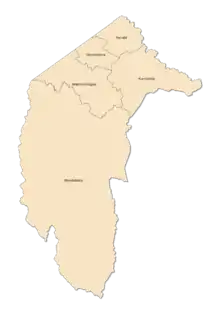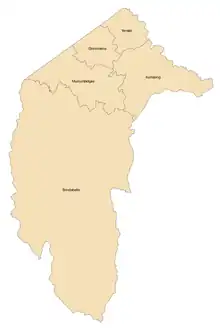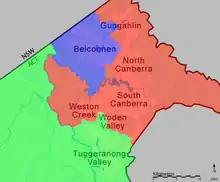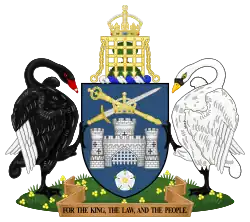

From 2016, the 25-member unicameral Australian Capital Territory Legislative Assembly is elected from five multi-member electorates, with five seats per electorate.
History

Electorate boundaries for Australian Capital Territory Legislative Assembly elections have changed a number of times since the first ACT election in 1989. For the 1989 and 1992 elections, the ACT comprised one electorate, electing seventeen members to the Assembly. Prior to the 1995 ACT general election, three multi-member electorates were established and have remained in place, with boundary and redistribution changes made prior to the 2001 and 2008 ACT general elections.[1]
On 30 April 2002, the ACT Electoral Commission made a submission to the ACT Legislative Assembly's Standing Committee on Legal Affairs, which inquired into the appropriateness of the size of the Legislative Assembly for the ACT and options for changing the number of members, electorates and other related matters. The Electoral Commission recommended increasing "the size of the Legislative Assembly to three (3) electorates each returning seven (7) Members, giving a total of twenty-one (21) Members".[2] The Assembly has not made any changes to either its size (number of members) or the number of electorates.
Electorates
Current electorates
This is a list of electorates for the 2020 ACT general election:
Brindabella
Electing five members to the Assembly, Brindabella contains the town centre and all of the suburbs of Tuggeranong excluding Kambah east of Drakeford Dr. It also includes all of the ACT which is south of the Murrumbidgee River, thus making it the largest electorate by area. It used to exclude the whole of the suburb of Kambah.
Ginninderra
Electing five members to the Assembly, Ginninderra contains the town centre and all of the suburbs of Belconnen excluding Giralang and Kaleen. Its southern boundary was the Molonglo River prior to the 2016 election. It used to exclude the suburbs of Evatt, Lawson and McKellar.
Kurrajong
Electing five members to the Assembly, Kurrajong contains all the suburbs of Inner North Canberra, Inner South Canberra and Oaks Estate. It used to include the suburbs of Deakin and Yarralumla.
Murrumbidgee
Electing five members to the Assembly, Murrumbidgee contains all the suburbs of the Molonglo Valley, Weston Creek, Woden Valley and the Tuggeranong suburb of Kambah east of Drakeford Dr. It also includes the suburbs of Deakin and Yarralumla. It used to also include the whole of the suburb of Kambah.
Yerrabi
Electing five members to the Assembly, Yerrabi contains all the suburbs of Gungahlin as well as the Belconnen suburbs of Giralang and Kaleen and the village of Hall. It used to also include the suburbs of Evatt, Lawson and McKellar.
Former electorates
These electorates no longer exist:
Molonglo
Molonglo was an electorate of the Australian Capital Territory Legislative Assembly that was contested from the 1995 election to the 2012 election, it covered Inner North Canberra, Inner South Canberra, Weston Creek and most of the suburbs of Woden and Gungahlin. It was a 7-seat electorate.
See also
References
- ↑ "Electoral boundaries". ACT Electoral Commission. 2008. Archived from the original on 23 July 2010. Retrieved 21 August 2010.
- ↑ "Inquiry into the appropriateness of the size of the ACT Legislative Assembly" (PDF). Submission to the Standing Committee on Legal Affairs. ACT Electoral Commission. 30 April 2002. Archived from the original (PDF) on 14 September 2009. Retrieved 21 August 2010.
